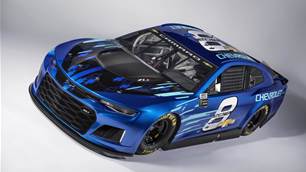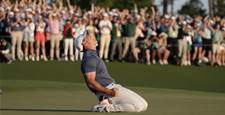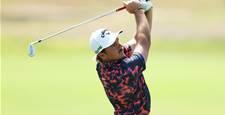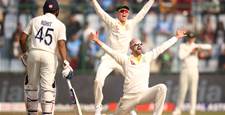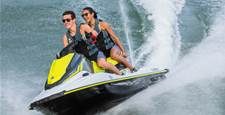NASCAR’s main game requires the same levels of skill, stamina and perseverance as any world-class racer,
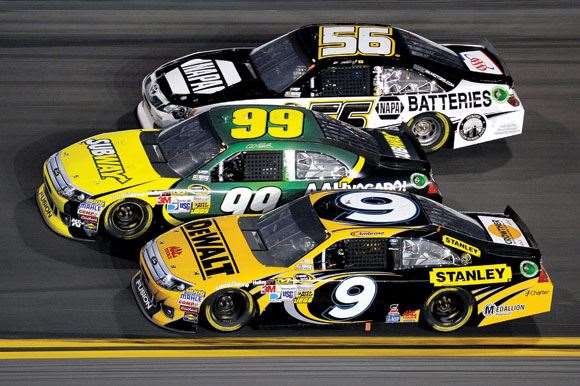 photos by Getty Images
photos by Getty ImagesNASCAR’s main game requires the same levels of skill, stamina and perseverance as any world-class racer;
When “big tobacco” sponsorships went up in smoke in 2006, Formula One’s Bernie Ecclestone turned to the big end of town, certain that the national prestige of hosting a Grand Prix would provide the necessary support. On the other side of the Atlantic, NASCAR’s Bill France Jr went strictly retail; soap powders, supermarkets, beer and breakfast cereals supplemented the perennial list of oil and fuel sponsors to extend his empire. Even the local hamburger joint wasn’t immune.
Like an ever-expanding shopping mall, NASCAR has extended its reach into Canada and Mexico, yet remains rooted in the deep south of the USA, where the good ol’ boys discovered there was a bigger buck to be made in stock car racing than outrunning the Internal Revenue Service delivering illegal corn whisky. A sometime racer himself, Bill France Sr had been a fast enough spruiker to convince Daytona’s city fathers to fund a two-and-a-half-mile super speedway. Nominating the oval as the “World Centre of Racing” was pure hyperbole, but 50 years on, Daytona now has the same level of recognition as Monaco, LeMans, Monza and Indianapolis.
Today, any driver who manages to graduate into NASCAR’s main game requires the same levels of skill, stamina and perseverance as any world-class racer, be it touring cars, sport cars or open wheelers; yet outside the USA, NASCAR is little- understood, seldom appreciated and often disparaged as “the turn left brigade” performing in a circus. The reality is, NASCAR drivers have acquired the exceptionally precise skills and (often misplaced) faith in their fellow gladiators to manoeuvre overpowered and under-tyred 1800kg lumps of metal at speeds up to 400km/h, separated by no more than a slip of Sorbent back, front and often both sides. Finishing first is best, but NASCAR’s spread of winnings – where a victory may net as much as $1.5 million and a last place DNF $250,000 – acknowledges there’s no show without a full cast.
Believing a promoter’s hype about the numbers generated by their sport is akin to buying stock on the tip of a Wall Street broker you’ve just met at the bar. However, Fox Sports recently renewed an eight-year $1.8 billion deal for the NASCAR TV rights. Add to this the sport’s claim of six million spectators over a season, plus the millions the car manufacturers and sponsors pump unto the show, and there’s an arguable claim that NASCAR generates as much money as Formula One. (Money that passes through more hands than it does in Bernie Ecclestone’s fiefdom.) And, in a world where playing poker has become a sport, it’s often claimed NASCAR has mismanaged the circus in an attempt to build TV ratings. This may be so ‒ just don’t try to convince the driver who, suffering from major fluid loss, stomach cramps and arm pump, made a miniscule miscalculation and dropped six places in the last 90 seconds of a tough three-hour event. He was racing.
Contrary to the criticism of oval racing, there have been a number of all-American heroes who’ve bested the world’s best – Mario Andretti, AJ Foyt and Dan Gurney to name a few. Of the Euro set, no driver – with the single exception of Juan Pablo Montoya – has made a serious attempt to tackle the Americans on their home turf. And when Montoya made the move, it was seen as akin to Pavarotti joining the “Grand Ole Opry”.
Launceston’s Marcos Ambrose isn’t the first Australian to step through the portal into the parallel world of NASCAR. Back in the 1960s, talented race car engineer and occasional Formula One driver, Frank Gardner, made an appearance at Rockingham and, some years later, Queensland’s laconic Dick Johnson punted a Ford around a number of NASCAR’s road circuits until he short-circuited the live TV broadcast by dropping a magic word when he hit the Armco – a hanging offence in family-values NASCAR. But Ambrose is the first Australian and, along with Montoya, just the second “furriner” to attempt to build a career in this peculiarly American sport.
In what must’ve been a humbling experience for the former European Formula Ford and dual V8 Supercar champion, Ambrose was at first denied a start at Daytona until he’d proven his competency on lesser speedways. After five years paying his dues in NASCAR’s “feeder” series, Ambrose proved his on-track abilities and, just as critically, displayed he could fit into the NASCAR mould ... mostly by not standing out. Not yet anyway. And when he recently signed a multiyear contract with Richard Petty Motorsports, he was embraced by the most revered and most fiercely competitive family in NASCAR’s history. Patriarch Lee Petty won the very first Daytona 500 and his son Richard went on to a record 200 NASCAR victories – seven of which were at Daytona. The next two Petty generations also compete, but the team is looking to Ambrose and his team-mate, Aric Almirola, to add to the combine’s impressive record ... and the vast quantities of team merchandise being sold.
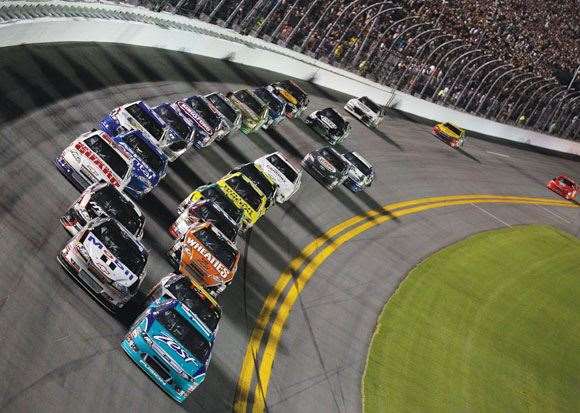 photos by Getty Images
photos by Getty ImagesAmbrose dismisses the fact he’s the first non-US citizen to take a pole position in the main game (two, actually) or to win a Sprint Cup race, but he agrees he’s progressed further than he ever imagined. “NASCAR’s a tough sport to get your head around, but I feel I’ve been getting better as a driver and as a person. Our sponsors [tool manufacturers] De Walt and Stanley are blue chip American companies and for them to have an Australian as their ambassador means a lot to me.” Ambrose states this with obvious sincerity, something you feel may not be the case if he had to parrot platitudes about the Dixee Queen Fairy Floss, Choc Top, Swoopy Swirl and Laxative Emporium Ford.
Clearly, Ambrose appears to have accepted NASCAR’s finely balanced amalgam of circus, business and sport. “NASCAR’s continually redefining the mix to make the sport more about the man than the machine by ensuring that Sprint Cup Cars are the gnarliest to drive in the world,” he explains. Long gone are the days of the cigar chompin’, hard drinkin’, cussin’ and hell raisin’ days of pioneers such as Red Vogt, “Reckless” Roy Hall, Smokey Yunick and “Fireball” Roberts. Now, while not dressed to military precision, the drivers’ and teams’ uniforms provide the mandated marketing image. It’s all the “boy you’d let your daughter marry” look ‒ neat, tidy, polished black lace-ups, cap peak facing squarely forward and sunglasses radiating that fine line between stoic determination and macho intimidation.
Inside Sport is at Daytona to witness the 54th Coke Zero 400. That Coke Zero has existed for less than a decade is immaterial, as is the fact the race was once a 250-miler; and sponsored by Pepsi at that. The marketing gurus created a new “platform” and, in the best Orwellian tradition, the history books have been rewritten to accommodate the sponsor. For, more than anything, NASCAR is a mega merchandising combine built around a racing car championship and promoting itself as the sport most connected to its fan base. This is clearly demonstrated on the dummy grid, where entire families weave their way between the pristine race cars. Instead of hot babes in hot shorts and ageing rock stars, babies in prams and octogenarians in zimmer frames negotiate the stacks of tyres and humming generators to mingle with the pit crews as they test their airhoses and communication setups whilst politely answering questions about their charges: “No ma’am, the cars have no doors – the drivers climb through the windows.”
As the grid clears, Miss Sprint Cup Queen introduces the drivers, some of whom accept cheques for various deeds carried out in practice or qualifying – or simply the Antibacterial Hand Sanitiser Award for the tidiest tool kit. This provides the drivers with the opportunity to demonstrate their speed and dexterity by donning three different sponsors’ caps in less than 30 seconds while simultaneously shaking hands and patting the sponsor’s beaming eight-year-old on the head. Finally, Matt Kenseth accepts the big cheque for qualifying on pole and, under intense questioning, reveals his race strategy is to “get out in front and try to stay there”.
As the drivers are introduced, it’s easy to judge the crowd’s favourites by the level of decibels; on top are Ryan Newman, Jeff Gordon and Dale Earnhardt Jr. The only common denominator is that all three drive for Chevrolet, but so does Kurt Busch, who is roundly booed. Other drivers to register are Brad Keselowski and Bill Elliott, while Ambrose slips by without much of a response – though his Twitter and Facebook fans already number over 50,000. It seems only a matter of time until the #9 DeWalt–Stanley Ford and Ambrose are emblazoned on as many caps and T-shirts. In addition to the proliferation of flags, banners, jackets, T-shirts and caps, many of the women in the grandstand have blow-up cushions upon which the faces of their favourite drivers have been printed – the ultimate sign of devotion.
Before the race gets underway, the entire crowd rises, as four highly decorated Vietnam veterans – Congressional Medal of Honour winners no less – are honoured. The reverence is endemic, the applause genuine and, when a gigantic B52 bomber lumbers malevolently across the speedway at little more than stall speed, there’s an eerie silence; but the patriotism of the crowd is as palpable as the smell of unspent aviation fuel: God bless us. We are America. Land of the brave and home of the free.
In quick succession, a division of military cadets unfurls the Stars And Stripes, a national TV star agonises over Star Spangled Banner (whilst appearing to Twitter her performance to her no doubt immense fan base), the official NASCAR Padre blesses us all and someone famous utters the even more famous phrase “Genlmenstartyerinjins”.
Following the sight and sound of the B52, a mere 30,000 horsepower is almost an anticlimax, though the speed at which the pack of 43 cars thwacks around the massive tri-oval – 4kms in less than 40 seconds – makes it impossible to follow anything except that Kenseth’s “strategy” seems to be working. And, after qualifying in the top ten, Ambrose has fallen back mid-pack.
Over in the infield, NASCAR fans crowd the Fanzone Terrace, a large beer garden above the garage area serviced by several bars. It’s obvious this party will continue long after the victor has performed his tyre-shredding donuts and returned to the bosom of his family. Many of these fans are following the action on the big screen, turning only occasionally to watch the race leaders power out of turn four onto the large boomerang-shaped front straightaway, where the second multicar pileup of the evening occurs.
As the incident is replayed on the big screen, the Fanzone rushes to the edge of the terrace, phone cameras in hand, to photograph the wrecks being pushed, towed or shovelled into the garage area below.
Tour de France-style pack racing is a spectacle seldom seen, but Le Tour will never provide the visceral rush of hundreds of tyres burning out beneath 40 tonnes of metal sparking off the unforgiving concrete ‒ before the entire crashfest turns back in on itself. Hollywood mayhem in real time with no SFX, no computer graphics and no art director choreographing the action. Near misses and miraculous saves are highly appreciated, but it’s metal on metal that provides the real entertainment – to be relived and analysed many times over on huge screens. This is NASCAR.
With the race in its final stages, there’s yet another major melee that puts a number of drivers out of the race – eventually won by Tony Stewart, with Matt Kenseth fading to third. Ambrose is credited with 30th position and as IS leaves Daytona, we realise that, should Ambrose achieve his objective of victory on one of NASCAR’s high-speed ovals, the ultimate attribute could be measured by the number of 110kg Louisiana locals who sit on his face for a full course of enchiladas, washed down with jumbo-sized slurpies.
For Ambrose, it won’t be over until the fat ladies sit, but by then, he’ll have banked his 20th million, inspiring more than one of our V8 Supercar drivers to enter the portal into the parallel world of NASCAR.
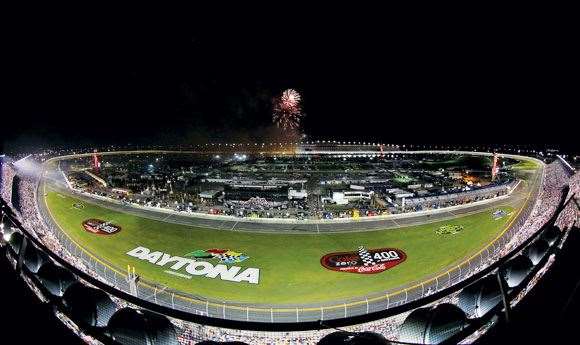 photos by Getty Images
photos by Getty Images‒ Peter Whitaker
Related Articles
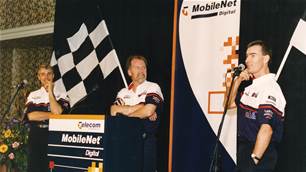
The Thing About Golf Podcast #93 – Tomas Mezera
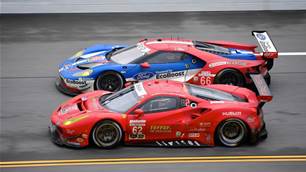
Pic gallery: Daytona 24 Hour
